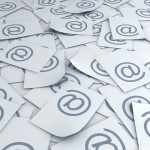What are the options to reducing email overload? Ferrari now limits employees from sending the same email to more than three people. Is this the best way to tackle email overload. Financial Times 9 July 2013.
Tags: corporate email etiquette, corporate email overload, email management training, email overload
Your management style alone can be a major contributor to email overload (yours and your team’s) see Financial Times 1 July 2013
Tags: corporate email, corporate email etiquette, email management culture, email overload
Six trillion business e-mails were sent in 2006 according to David Ferris, senior analyst of Ferris Research. Although some have predicted its death, email as the default mode of communication has only continued to increase. The two main causes of email overload are the volume of email traffic and lack of effective management. This turns a supposedly quick and convenient means of communication into something time-consuming, distracting, frustrating and ultimately counterproductive. The stress of dealing with this kind of information, hitting us from all directions equivalent to a hundred newspapers being hurled at us at once, affects both our health and state of mind. This is not all. Unsolicited or unwanted emails cost companies billions in lost revenue. But by effective traffic control and management, we can hugely reduce email overload. The benefits of this are enormous in terms of mental, physical and financial well-being.
Here are ten simple tips to achieve just this:
Above all, think if you really need to send an email. Can you pick up the phone or have a quick face-to-face chat instead? The more you send, the more you will receive, so avoid being a part of the problem.
Modern technology is supposed to save us time, enable us to work more efficiently, and make our lives less stressful and more productive. And it does. Only, we have to learn how to manage it so we are in control rather than the other way around.
Alastair is a freelance writer and has provided this article on behalf of Communicaid a culture and business communications consultancy.
What does your inbox tell you about your management style? In Tuesday’s Financial Times, Naomi Shragia wrote a compelling piece about manager’s fear of delegating. Over the years we have reviewed many senior manager’s inboxes as part of our smart email management one-to-one coaching and training programmes. An obvious source of email overload is the higher than

Too much Cc’d = Email Overload
normal volume of Cc’d email.
When asked why there is so much Cc’d email and how much is really necessary the standard reply is along the lines of ‘I need to see what is going on’. But why if you have a team you trust? Or perhaps either you don’t really trust your team (be they junior or senior managers) or they don’t believe that you trust them. Consistently, I have observed a gap between what a manger says is
his style and the reality of business culture. Most managers tell you they delegate and have developed a culture of trust and empowerment. Few acknowledge to being mico-managers. Not so judging by the amount of Cc’d email. If reality matched perceptions, they and their team would make far less use of Cc’d email.
If the culture is one of trust and empowerment, Cc’d emails is only sent either in advance of an impending crisis or to say ‘job done, crisis averted’. As Shragai points out micro-management styles and a fear of delegating holds back many business and their employees. Sadly email adds fuel to this fire by encouraging email overload through excessive and unnecessary use of the Cc address line. Most people already loose one hour a day through email misuse: add to this mico-management and we have another recipe for lost productivity and raised stress levels.
Take a look at your inbox to see just how much Cc’d email is in it. Then ask yourself how much you really need. How much is vanity and a reflection of your own lack of trust and ability to delegate? If you need some help to reduce the volume of cc’d email and save you your business time, why not call us and book a one-to-one coaching session. We guarantee to save you time. If we don’t we don’t charge you!
if you would like some help reducing the email overload and moving towards a more productive business culture why not call us and ask about our smart email management one-to-one coaching can help you and your business.
Tags: cc'd email, email management, email overload
The key to effective email management and reducing email overload is developing a process for handling each email one and once only. Make sure when you open it you do something with it. Use the 4Ds principle: Deal; Delete: Delegate or Defer. Don’t just open it, and move on leaving the email lingering in the inbox. Do this too often and by the end of the week you will have a very full inbox.
Within this process a great way to save time is to use your email software to help you. Use the keyboard shortcuts to improve your performance even more.
Keyboard shortcuts save time because you reduce the number of keystokes needed and playing hunt the menu item.
If you find these useful, then why not ask us to run a Brilliant Email Masterclasses to help you and your colleagues save time? We cover the Ds for processing emails more efficiently and software tips like these.
Meanwhile, do share your favourite keyboard short cut.
Tags: Brilliant Email, email management training, email overload, keyboard shortcuts